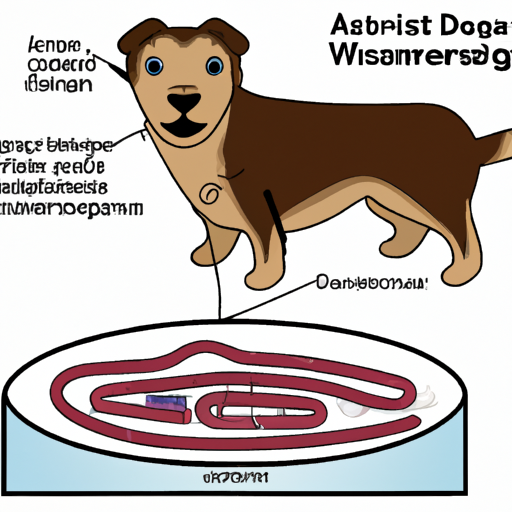Introduction
You’re a caregiver, you’ve got a heart as big as a mountain, and your furry friend means the world to you. So when you notice something off-kilter with your beloved pet, you naturally want to understand what’s going on. If you’ve stumbled upon the term ‘tapeworm’ in your search, this is the place where your queries will be answered.
Understanding Tapeworms
Tapeworms are flat, segmented worms that live in the intestines of some animals. Animals can become infected with these parasites when they swallow fleas infected with tapeworm larvae or when they hunt and eat wildlife infested with tapeworms or fleas.
| Common Types of Tapeworms | How They Infect Dogs |
|---|---|
| Dipylidium caninum | By ingesting fleas during grooming |
| Taenia | By eating wildlife or livestock |
| Echinococcus | By eating wildlife |
Spotting the Signs of Tapeworm
As a caregiver, you’re the first line of defense for your pet’s health. Being aware of the signs and symptoms can aid in early detection and treatment. Here are some symptoms to keep an eye out for:
- Visible segments of the worm in your dog’s feces or stuck to the fur around their tail.
- Your dog dragging their bottom on the ground (scooting).
- Vomiting segments of the tapeworm.
- Unexplained weight loss.
Prevention and Treatment
Now that you know what to look for, let’s talk about prevention and treatment. After all, forewarned is forearmed.
- Prevention: The best way to prevent tapeworms is to keep your home and pet flea-free. Regularly clean your dog’s bedding and keep your dog on a flea prevention regimen. If your dog is a hunter, try to prevent them from eating wildlife.
- Treatment: If your dog is infected, don’t panic. Tapeworms are easily treated with prescribed medications that kill the worms. The dead worms then pass out of your dog’s body with their feces.
Living with a Dog Infected by Tapeworm
Living with a dog that has tapeworm can feel daunting, but remember, you’re not alone. With the right information and the right care, your dog will be back to their usual self in no time.
- Hygiene: Keep your home clean, especially the areas where your dog spends most of their time.
- Regular Vet Visits: Regularly monitor your dog’s health with visits to the vet.
- Support: Make sure your pet is comfortable and well-cared for during this time.
Frequently Asked Questions
-
Can humans get tapeworms from dogs?
Yes, though it’s rare. Humans can get tapeworms from accidentally swallowing a flea infected with tapeworm larvae or by eating undercooked or raw meat. -
Are tapeworms visible to the naked eye?
Yes, they often appear as small, white segments resembling grains of rice in your dog’s feces or on their rear end. -
Can tapeworms harm my dog?
While most dogs don’t have serious complications from tapeworms, untreated infections can lead to weight loss and a poor coat condition. -
Can my dog get tapeworms from another dog?
Dogs cannot get tapeworms directly from each other, but if one dog has fleas and those fleas are ingested by another dog, the second dog can get tapeworms. -
How long after treatment will the tapeworms disappear?
You should notice a decrease in tapeworm segments within a few weeks, but it’s advised to continue treatment as recommended by your vet.
Remember, knowledge is power. Understanding what tapeworms are, how to spot them, and how to prevent and treat them can make all the difference for your canine companion.



